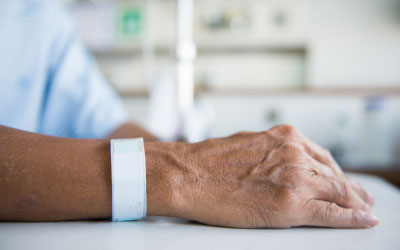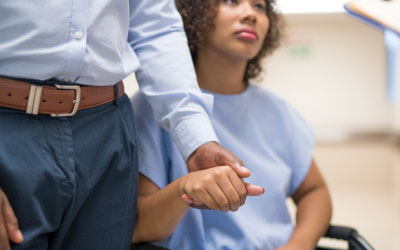Treatment for Childhood Leukemia
Learning that your child has leukemia can be overwhelming. Your immediate concerns are figuring out how to manage day-to-day aspects during treatment and making educated decisions about treatment.
Concerns change following treatment. Your focus shifts toward making a smooth return to your child’s everyday routines. Planning ahead and knowing what to expect may make this experience easier.
Childhood leukemia treatment options
- Chemotherapy
- Immunotherapy
- CAR T-cell therapy, a type of immunotherapy specifically approved for children with B-ALL
- Radiation
- Stem cell transplantation (bone marrow transplant)
- Targeted therapies
Most children with leukemia receive chemotherapy for treatment. Children with high-risk leukemia may receive high-dose chemotherapy with stem cell transplantation.
Surgeries aren’t helpful treatments for leukemia because solid tumors usually don’t form. Leukemia spreads through the blood and bone marrow, making surgery ineffective. Surgeries such as lymph node or bone marrow biopsies often help diagnose leukemia but do not treat it.
Your child’s doctor may insert a small plastic tube (central venous catheter) into a large vein in the upper arm or chest. This may make procedures easier for your child — it reduces needle sticks needed for repeated blood collections and chemotherapy treatments. Taking steps to prevent and watch for infections at the catheter site is very important.
Side effects of childhood leukemia treatment
Treatments for childhood leukemia may cause some side effects, depending on the type, dose, and duration of treatment. Treatment may change your child’s physical, mental, neural (related to nerves), or emotional state.
Some side effects happen during treatment. The most common side effects of chemotherapy include:
- Diarrhea, nausea, or vomiting
- Easy bleeding or bruising
- Fatigue
- Hair loss
- Increased infection risk
- Loss of appetite
- Mouth sores
Some side effects may last for a long time, even after treatment ends (long-term effects). Side effects called late effects may happen much later in your child’s life.
Read more about childhood leukemia treatment's long-term and late effects.
Preparing for hospital stays
You and your child may need to stay overnight for some treatments or procedures. Doctors may need to watch your child after using medicine (general anesthesia) that makes your child sleep during a procedure.
Some treatments may require you and your child to travel far from home for longer periods, sometimes several months.
The most important things to pack for long hospital stays are:
- Clothing: Pack enough to last you and your child seven to ten days. Make sure to take the weather into account by checking the ten-day forecast. Include a robe and comfy slippers.
- Documents: Pack your child’s birth certificate, your photo IDs (parents), and everyone’s Social Security numbers. Bring insurance cards for medical, dental, or pharmacy insurance. Pack any paperwork about child custody, guardianship, or divorce. Bring any advance directives for your children who are 18 or older.
- Medications: Pack any prescription medications you or your child are currently taking. Make sure to pack extra in case you need them. Make a list for your doctor of all your child's medications.
- Personal items: Pack things that remind your child of home.
- Toiletries: Pack toothbrushes, toothpaste, deodorant, and other personal grooming supplies.
Before your hospital stay, write down the following information and bring it with you:
- Emergency contact information, including the person’s name, address, phone number, and relationship to you.
- Employer information for the parents or guardian (or patient if applicable).
- Your child’s pediatrician or family doctor information, including the address, phone number, email, and fax number.
Plan at home before leaving by:
- Making arrangements for siblings (meals, transportation to and from school)
- Scheduling household services (cleaning, laundry, trash, yard work)
- Arranging pet care (feeding, walking)
- Stopping your mail at the post office or have a neighbor/friend collect it for you
What to expect at leukemia treatment centers
Every leukemia treatment center is different. Call ahead to find out the cost of food and lodging and plan where you will stay. Social workers or staff members at the treatment center can help you find housing at or near the facility.
- Food: Most treatment facilities provide food for patients, families, and staff at cafeterias. Temporary lodging sites may provide meals, grocery cards, or meal cards to use at cafeterias, cafes, and approved eating places.
- Lodging: Some treatment centers have on-site housing available. You may need temporary apartment lodging for stays over 90 days. The Ronald McDonald House provides bedrooms, meals, and playrooms for families at very low to no cost for up to three months.
How to help your child adjust to time away from home
Child life specialists, social workers, and psychologists help your child cope and adjust during treatment. Some facilities may have support therapists who provide music therapy, art therapy, and pet therapy. Peer support groups and camp programs may help teens adjust and build coping strategies.
Bring schoolwork for your child to focus on between treatments. Some facilities may have teachers on staff to help your child with schoolwork.
Stay positive and encourage play time and activities. Keep your child connected with friends and family during treatment. Bring comforting items from home that your child can identify.
Very rarely, some children or teens may need extra help, such as medications or counseling, to adjust.
How to make your child feel at home at the hospital
- Blankets: Bring a soft, easy-to-wash blanket or two to soothe and comfort your child between treatments.
- Electronics: Pack small hand-held electronics so your child can play video games, listen to music, or watch movies.
- Pictures: Pack photos of family, friends, and pets.
- Toys: Bring a few of your child’s favorite toys. Make sure they are washable.
Recovery after childhood leukemia treatment
Recovery after leukemia treatment involves preventing infections, scheduling follow-up appointments, and returning to school.
Preventing infections
Treatments for childhood leukemia such as chemotherapy and immunotherapy weaken your child’s immune system. Your child is more likely to develop infections during and after cancer treatment.
It is important to take steps to prevent infections, including:
- Avoiding large crowds and people who are sick
- Cleaning commonly touched household surfaces (doorknobs, handles, light switches, and countertops) frequently
- Preventing scrapes, cuts, and scratches as much as possible and cleaning them immediately with soap and water
- Staying up to date with your child’s vaccinations, such as for the flu
- Using electric shavers instead of razors and extra-soft toothbrushes to avoid cuts and nicks
- Washing hands frequently and asking others around your child to wash their hands often
- Watching for signs of infection
Signs of infection include:
-
- Chills
- Coughing/sneezing
- Fever over 100.4 degrees
- Pain when urinating
- Redness/swelling
- Sore throat/stuffy nose
- Vomiting/diarrhea
Call your child’s doctor right away if you notice signs of infection so that treatment can begin immediately.
Scheduling follow-up appointments
Talk with your child’s treatment team about a survivorship care plan after your child’s treatment ends. This plan summarizes your child’s leukemia diagnosis and all treatments given. It also suggests a schedule for future follow-up exams, screenings, and tests for your child. These tests help doctors know how well the treatment worked. Screenings detect any signs of relapse (return of the cancer) early.
The most common types of childhood leukemia are acute lymphoblastic leukemia (ALL) and acute myeloid leukemia (AML). ALL and AML are unlikely to return after two years without symptoms. Your child’s leukemia is considered cured if symptoms don’t return after five years.
Returning to daily routines
Ask your child’s treatment team about when they think your child will be able to return to school and after-school activities.
Your child may be excited, nervous, upset, or anxious about returning to school after leukemia treatment. Call the school to inform your child’s teachers about how your child is feeling and ask for support.
Develop a school reentry plan that works for your child. Involve your school administration and your child’s healthcare team. Ask for accommodations for your child, such as an Individualized Education Plan (IEP), assistive devices, or 504 plan. Section 504 of the Rehabilitation Act requires schools to make reasonable accommodations for students with disabilities that IEPs don’t cover.
Educate the teachers on possible side effects of treatment that may affect your child’s learning process. Tell them if your child needs frequent rest, bathroom breaks, or more time to take tests.
Inform school staff to watch for long-term effects of treatment and signs of infection while your child attends school. Provide the school nurse with a list of medications your child takes and explain when and how to administer them.
Resources for you and your loved ones
Support can make a significant difference when you face a cancer diagnosis. You can connect with others who understand these challenges through our peer support programs. We offer an online support community and a mentoring program. We also have a resource directory, including information for children and adolescents/young adults, to help patients, families, and caregivers.



